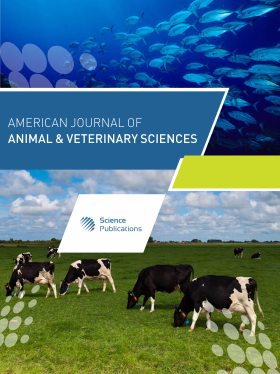Effect of High Incubation Temperature on Embryo Livability, Mortality, Hatchability, and Chick Quality in Commercial Layers
- 1 Department of Animal Sciences, Tshwane University of Technology, Pretoria, South Africa
- 2 Bergvlei Chicks, Hiveld Hatchery, Quantum Foods, Bronkhorstspruit, 1020, South Africa
Abstract
This research was conducted to determine the effect of high incubation temperature profiles on embryo livability, mortality, hatchability, and chick quality in commercial layers. Incubation temperature profiles were: Control (day 0-4: 37.8°C, day 5-9: 37.2°C, day 10-11: 37.0°C, day 12-13: 36.8°C), moderately high (day 0-4: 38.5°C, day 5-9: 38.2°C, day 10-11: 37.5°C, day 12-13: 37.0°C) and extremely high (day 0-4: 39.5°C, day 5-9: 39.0°C, day 10-11: 38.0°C, day 12-13: 37.5°C). The general linear model procedure in Minitab 17 was used to analyze data, whereas the mean separation was conducted using Fisher's LSD test (p<0.05). Temperature profiles influenced (p<0.05) livability, day 0-10, total moisture loss, body weight, and total mortality. The embryo livability was higher in a moderately high incubation temperature profile (93.31%) followed by control (86.55%) and extremely high incubation temperature profile (72.61%). Total moisture loss was higher (p<0.05) in the extremely high incubation temperature profile (16.55%) than in other temperatures. Dry chicks were greater in the extremely high incubation temperature profile (99.21%) compared to control (97.76%) and moderate high incubation temperature profile (93.19%). First-grade female yield was higher (p<0.05) in control (46.10%) compared to the other temperature treatments. The total hatch of a fertile was higher in the moderate-high incubation temperature profile (96.15%) compared to the control (93.63%) and extremely high incubation temperature profile (89.62%). Total embryo mortality was higher (p<0.05) in an extremely high incubation temperature profile (10.38%), followed by the control (6.37%), and then by a moderately high incubation temperature profile (3.69%). Moderate high incubation temperature profile showed great promise as a tool to increase embryo, livability, hatchability, and chick quality and reduce embryo mortality.
DOI: https://doi.org/10.3844/ajavsp.2024.393.403

- 3,082 Views
- 1,948 Downloads
- 0 Citations
Download
Keywords
- Embryo Mortality
- Hatchability
- Yolk Weight
